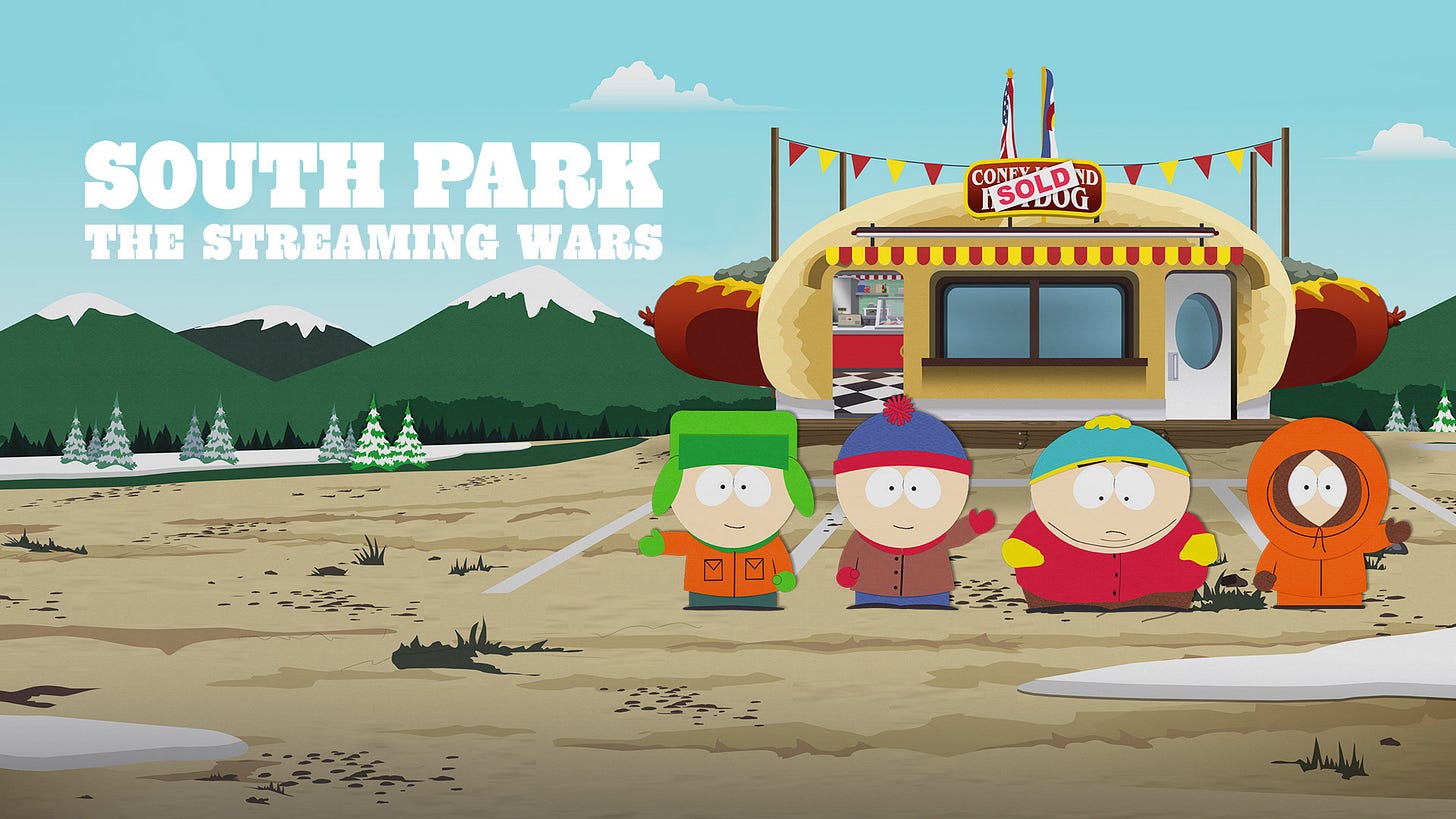I’m trying to keep this super simple… maybe a little too simple…
The $40 “Cable” Bundle
Increase The Amount Of Consistent Daily/Weekly Content On Each Streamer
More Programs With New Content At Least 20 Weeks A Year
Avoid Structuring Sports Rights To Overstress Consumers
Government Cap on High Quality Internet Pricing
There is constant chatter over the future of Streaming. Most people who talk and write about it seems compelled to keep saying, “Netflix won the Streaming Wars.” I have always said that there are no Streaming Wars. It is a conceit that misses the core reality of this transition.
Streaming is a much more pliable and inexpensive delivery system. But it IS a delivery system, not a new medium. Because what does it deliver? Filmed Entertainment… same as it ever was.
What Netflix did - and mostly, does - is a dramatic reconsideration of how television is valued, combined with a massive head start ahead of all the Legacy media players that are now in some form of competition. But by necessity, regardless of how we got to this moment in time, the Legacy players cannot play within the same paradigm as Netflix… even as Netflix is now aggressively transitioning to more emulate the paradigms of Legacy Media.
How often do you read a story suggesting, “Netflix won the Streaming War… so why is Netflix trying so hard to switch over to the structures of Legacy Media?”
Rhetorical question. “Never,” is the answer.
But the move to an Streaming world dominated by ad-based content delivery is about as old school as you can get. Amusingly, Netflix is leaning heavily, so far, into the earlier TV advertising model, which is sponsorship more than 11 minutes worth of :30 and :60 spots in every hour of viewing.
None of this is a negative for Netflix. But the model remains in transition… as most great models do.
Likewise, the model for what was once Linear TV is also in transition… an even greater and more dangerous one.
The same reasons why Legacy Media gave Netflix a 6 or 8 year head start in Streaming (depending if you start with charging for Streaming or with the launch of Netflix Originals on Streaming) are the same reasons that Legacy-based Streaming is being dragged along in the ongoing unavoidable transition to a 90% Streaming Delivery universe.
The old system - which is not where cable started, but where it evolved in the era of retransmission revenue hysteria - is undeniably shrinking, nearly 50% gone from just 5 years ago, but is still significantly more profitable than Streaming platforms.
But Streaming is where it is all headed… because it makes undeniable sense.
I look at it in the kinda opposite direction of most analysts. I look at what the market will bear and work my way backwards. I am more interested in what people actually want than I am on trying to analyze what they don’t have or who is failing.
The ambitions of each of the Streaming companies are interesting… but the audience is everything, now, with few annual subscriptions, than ever.
What does The Audience want? It wants everything they can have available to them for a limited amount of money. I don’t see people as cheap. I see the very long history of people paying, in the majority, $80-$120 per month per household for Cable for many years. Netflix was an expansion on that. Most households, at least in the US, bought in early, for $10, and the monthly bill, even at double the price, feels like a utility.
I believe that consumers are willing to keep spending what the have spent on Cable (etc) and a but more… but not a lot more. And the roll out of Streaming has been a loss leader. It was for Netflix. It has been, in these first 5 years, for the Legacy companies.
But again, the biggest problem, primarily for the Legacy-based companies, has not changed. They are making very good money from the ongoing MPVD (Cable/Satellite/Etc) model, The Cable Bundle, and don’t want to let go of that, even as it shrinks.
The traditional thinking is “Two in the hand is worth one in the bush,” but its much worse than that. Because what is in the bush is just not as valuable as what in still in hand. The more apt analogy is the old tale of the greedy character who can’t get its hand out of the jar without letting go of what they are trying to get out of the jar, aka The Clutching Hand Trope.
I believe that Streaming can never really reach its highest form while Cable/MVPDs are sucking up $80+ a month in any more than 15% of U.S. households.
How does The Industry get Legacy companies to make the leap away from the money in the Cable jar?
My #1… a legitimate cheap bundle. This would allow, in a real way, the other 50% of American households (or at least another 35% - 40%) to cut the cord.
What do people use on cable that is not widely available on streaming? Local TV, News, Sports. That’s really it.
As it is, you already have to choose, in most cases, between which news channels and which sports access you are paying for, whether it is Cable, Satellite, Streaming Cable (YouTubeTV, Hulu LiveTV, etc). They are all negotiating for access. Even local carriage is up for grabs. YouTubeTV in Los Angeles, for instance, used to have local Channel 13 and not have Channel 5. Now, we have Ch 5 and no Channel 13. There is a current petition effort to get CSPAN on YTTV.
“Unlimited DVR,” has become the norm for most of the Streaming Cable providers, as have PBS channels that once were rare. Many of the discrepancies with specific cable channels have been eliminated.
Regardless, the pricing on all of these options are over $85 a month.
There are some experiments with cheaper bundles, the most significant being Sling… but they have, for instance, only 3 local stations, even in a market like Los Angeles. And the only way to get even those local channels and the News networks is to have the full package… which is $66 a month. Still too expensive.
Keep reading with a 7-day free trial
Subscribe to The Hot Button by David Poland to keep reading this post and get 7 days of free access to the full post archives.



